Today I’d like to welcome Stephanie Osborn, the author of the utterly lovely Sherlock Holmes pastiche Displaced Detective series. (If you like Holmes’ adaptations, take a look at my review of the first book in the series; these are terrific!) She’s here to talk about…
Tidbits They Don’t Tell You In Author’s School
by Stephanie Osborn
I’m a pretty decent writer. And well before I decided to submit a novel manuscript for publication, I did my homework. I knew about query letters, slush piles, and house formats. I knew some publishing houses don’t take unagented submissions and some do. I knew how to find the correct name and address for a submission, and to address the query letter TO that person. I knew how to make my query letter POP.
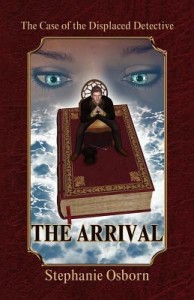 But once I got into the industry (translated – I had a manuscript under contract), I discovered that there are a few little details they don’t tell you in author’s school.
But once I got into the industry (translated – I had a manuscript under contract), I discovered that there are a few little details they don’t tell you in author’s school.
Sub-tidbit: Everybody knows not to trust spelling and grammar checkers, right? They don’t know there from they’re from their… (finish the statement on your own). Good. ‘Nuff said. On to the serious stuff.
Tidbit One: Different publishers have different definitions of what constitutes novel length. For some, it’s anything over forty thousand words. For others, it’s sixty, and for most in my genre (science fiction and mystery, often combined) it’s around one hundred thousand. This is a rough rule of thumb, and generally the bigger the number, the more leeway you have, plus or minus, in your word count. But make sure you know what the definition is for your genre, and MAKE IT LONG ENOUGH, or you could run into problems.
Tidbit Two: It IS possible to have a novel that’s TOO LONG. You see, there’s a bit of alchemy mixed into publishing. There’s some arcane formula publishers use to transmute word count into page count. Page count, in turn, converts to shelf space. Use up too much shelf space on one book, and the publisher suddenly can’t display as many books. So your wonderful, two hundred thousand plus word count book that spewed out of you like water from a fire hose probably isn’t usable, unless you can find a way to cut it down into two or three books.
Tidbit Three: There is a pecking order among authors, and it is not entirely determined by tenure, sales figures and awards. Who published you? How big was your last advance? (This is, not coincidentally, often determined by the size of the publishing house.) The bigger the publishing house, the larger your advance, the higher up the pecking order you are – at least in the minds of some. Be prepared to experience resentment from those below you, and disdain from those above. Some of us view the playing field as level – but not all.
Tidbit Four: The old adage, “You can’t get published without an agent, and you can’t get an agent without being published,” isn’t true – but it isn’t far from it. Many of the big publishers won’t even look at anything that isn’t handed to them by an agent. With some of them, it’s impossible to even find contact information for the budding author. Contrariwise, most agents won’t look at anyone who isn’t published. But there are some good publishing houses out there that DO accept unagented submissions. The trick to these is that, unless you know somebody, your submission goes into a “slush pile” and will remain there for some time. Slush pile submissions are read in the order received, so your baby will be there for however long it takes for the company’s readers to dig down to it. So be prepared to be patient.
Tidbit Five: A mentor helps. He or she should be someone already experienced in the business, and willing to take on a protégé. HE is the “somebody you know,” your entrée into the business. He can act as your reviewer, your advisor, your agent, your friend, and your shoulder to cry on when an editor says your beloved baby is a pile of horse manure.
Tidbit Five-A: Editors do sometimes say this. Or words to that effect.
Your mentor can point you in new directions, and tell you if and when someone is trying to take advantage of you. Sometimes he even becomes a co-author, and then it’s really fun.
Tidbit Six: Getting a contract in hand is NOT the end of the job. It’s the beginning. Or maybe the middle.
Because now you get to work with one or more editors, copy editors, and proofreaders. Multiple times. Read: for as many iterations as it takes to get the book into the condition that the publishers consider ready for publication.
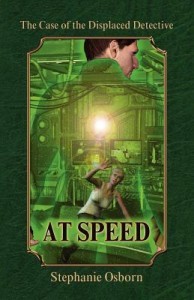 Tidbit Six-A: Be aware that you are NOT required to do everything, or even anything, the editors say. But you better really be confident you’ve done it exactly right, because these guys are more experienced than you are and know what they’re doing.
Tidbit Six-A: Be aware that you are NOT required to do everything, or even anything, the editors say. But you better really be confident you’ve done it exactly right, because these guys are more experienced than you are and know what they’re doing.
So you have the book edited, it’s in gorgeous shape; the cover art has come down and it’s beautiful. You’re done, right? Nope. Now you get the e-ARC, the electronic Advanced Review Copy. You get to review that, make corrections, and send the corrections back.
NOW you’re done? No. Now you get the galley prints. These are unbound first run prints of your book. Again, review for errors and send back the corrections.
Meanwhile, you and your publisher are working on the public relations and publicity campaign. Start making appearances before the book is released if you want to build buzz. Build a website. Blog. Tweet. Face. Space. Link. Plus. Pin. Good. Net. Ning. Tag. (If you don’t know what I’m talking about, you need to find out.) If you can find a way to get your name out there, and to get your book’s name out there, do it.
After the book comes out come the interviews, talks, and book signings.
Somewhere in there, you start writing your next book.
Tidbit Seven: You NEVER really get done.
Tidbit Eight: Once you’ve realized Tidbits One through Seven, you are now an experienced, professional author.
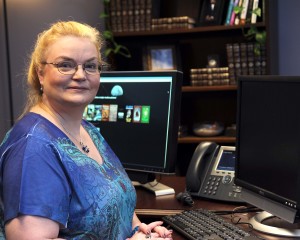 About Stephanie OsbornFew can claim the varied background of Stephanie Osborn, the Interstellar Woman of Mystery.Veteran of more than 20 years in the civilian space program, as well as various military space defense programs, she worked on numerous space shuttle flights and the International Space Station, and counts the training of astronauts on her resumé. Her space experience also includes Spacelab and ISS operations, variable star astrophysics, Martian aeolian geophysics, radiation physics, and nuclear, biological, and chemical weapons effects.
About Stephanie OsbornFew can claim the varied background of Stephanie Osborn, the Interstellar Woman of Mystery.Veteran of more than 20 years in the civilian space program, as well as various military space defense programs, she worked on numerous space shuttle flights and the International Space Station, and counts the training of astronauts on her resumé. Her space experience also includes Spacelab and ISS operations, variable star astrophysics, Martian aeolian geophysics, radiation physics, and nuclear, biological, and chemical weapons effects.
Now retired from space work, Stephanie has trained her sights on writing. She has authored, co-authored, or contributed to more than 20 books, including the celebrated science-fiction mystery, Burnout: The mystery of Space Shuttle STS-281. She is the co-author of the “Cresperian Saga,” book series, and currently writes the critically acclaimed “Displaced Detective” series, described as “Sherlock Holmes meets The X-Files.” She recently released the paranormal/horror novella El Vengador, based on a true story, as an ebook.
In addition to her writing work, the Interstellar Woman of Mystery now happily “pays it forward,” teaching math and science through numerous media including radio, podcasting and public speaking, as well as working with SIGMA, the science-fiction think tank.
The Mystery continues.
To learn more about Stephanie, visit her website or follow her on Twitter.







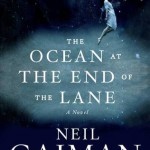
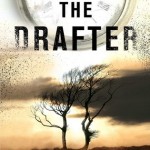

Great advice, and insider info! I’m still working on my first novel, this helps a lot! Thank you. 🙂
I always love reading advice from people who have been there. This is gold! Thanks!
I’m currently not a writer, but I do have a couple of book ideas started… and this is great advice! Thanks Stephanie!
I am not currently a writer, but I used to write short stories from time to time for my own uses. Now this information is great information for if and when I may decide to move forward and share anything I have written or may write.